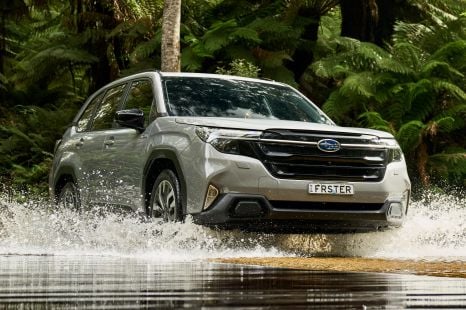

Max Davies
4 Days Ago

News Editor
Audi’s legendary turbocharged five-cylinder engine lives on in the fiery RS3, though its days are numbered.
The redesigned 2022 Audi RS3 will continue to offer the choice of four-door sedan and five-door ‘Sportback’ hatch body styles when it arrives Down Under in the first half of 2022.
The RS3 still packs a turbocharged 2.5-litre five-cylinder engine, and while its power is unchanged at 294kW compared to the current model, it packs 20Nm more torque for a total of 500Nm.
Both the Sportback and sedan can do the 0-100km/h sprint in just 3.8 seconds, down from 4.1 seconds, while maximum power is now available at 5600rpm, down from 7000rpm.
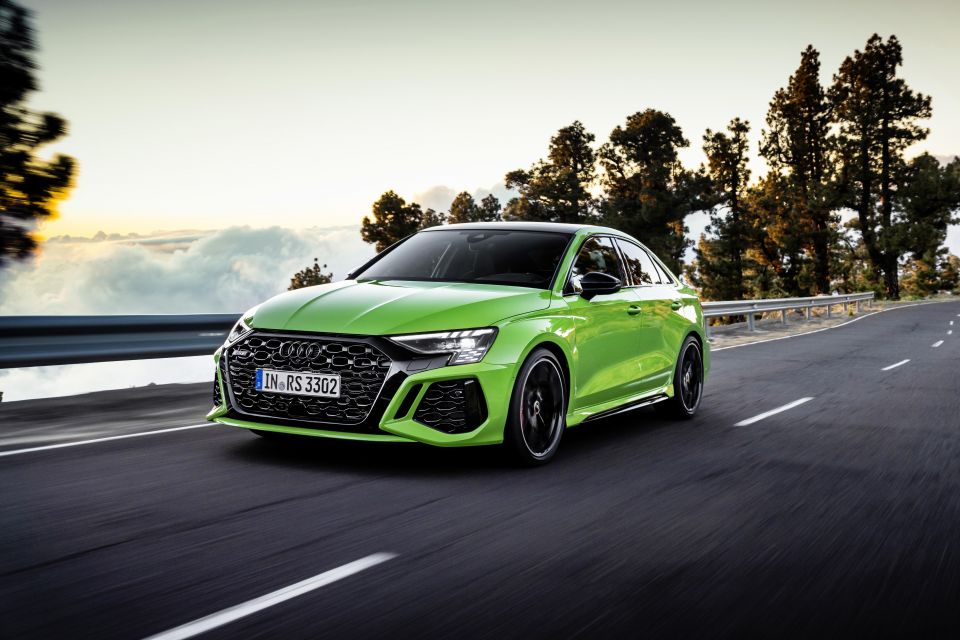
A seven-speed dual-clutch automatic transmission continues to be the only transmission available.
The exhaust system now features a fully-variable flap control system for a wider range of sound modes. Audi does warn, however, the RS3 doesn’t crackle and pop quite as much as it used to. A sports exhaust system is optional.
The top speed is limited to 250km/h, though a 280km/h top speed will be optional in Europe. The RS Dynamic package with ceramic brakes pushes that even higher to 290km/h.
Six-piston steel brakes are standard, with 380 x 38mm carbon ceramic front brakes optional.
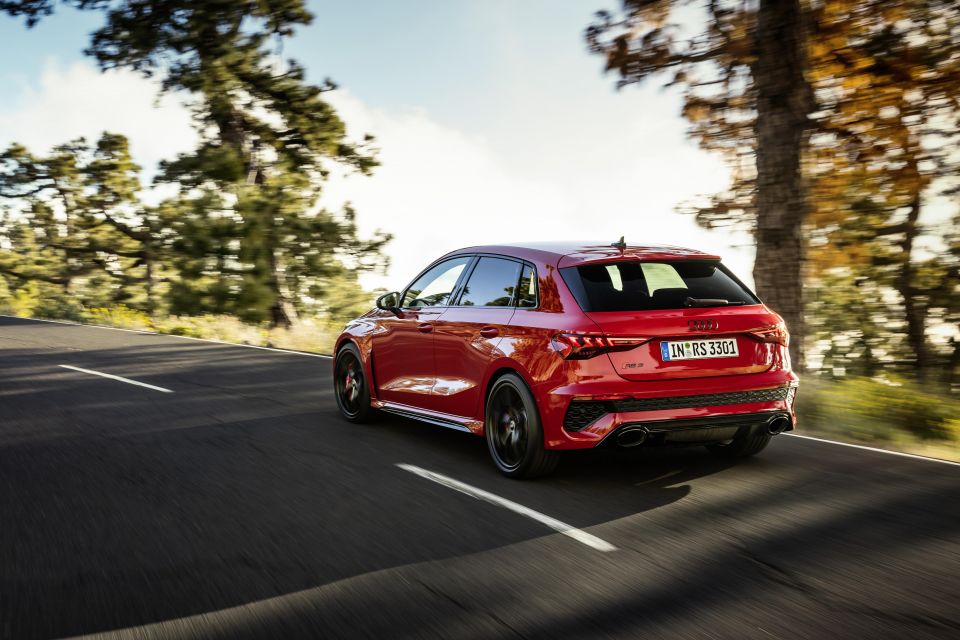
A high-performance brake system weighs 10kg less than the steel brakes and features 375 x 36mm ventilated and drilled discs at the front and 310 x 22 mm ones at the rear.
You can choose between black or red calipers for the steel brakes and grey, red or blue callipers for the ceramics.
The RS3 sits 10mm lower than an S3 and 25mm lower than an A3. It wears 19-inch wheels in Pirelli P Zero tyres, with semi-slick Trofeo R tyres optional.
It has ditched its Haldex all-wheel drive system for Audi’s new RS Torque Splitter.
The new system allows for active and fully variable torque vectoring between the rear wheels.
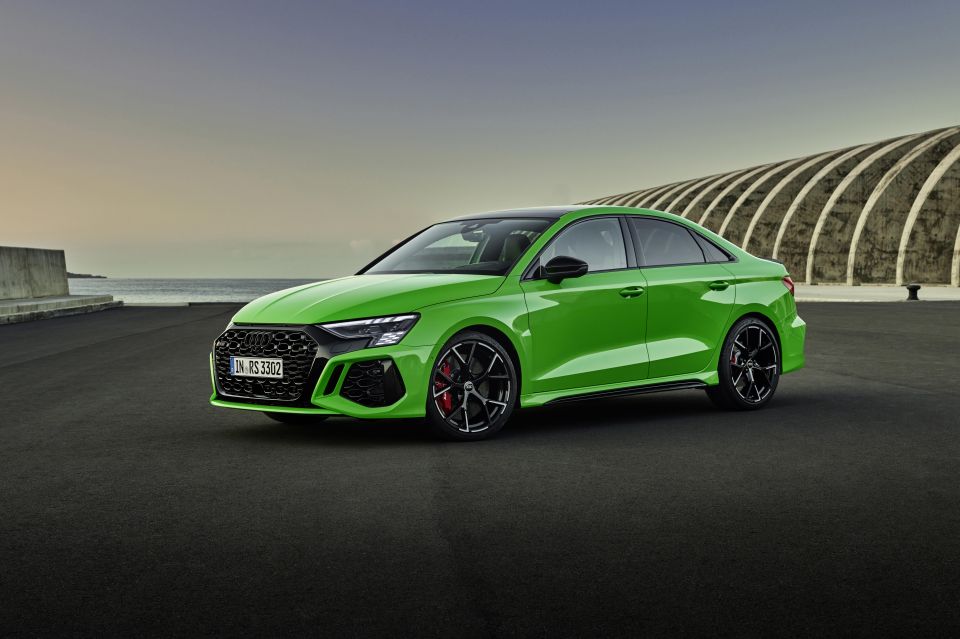
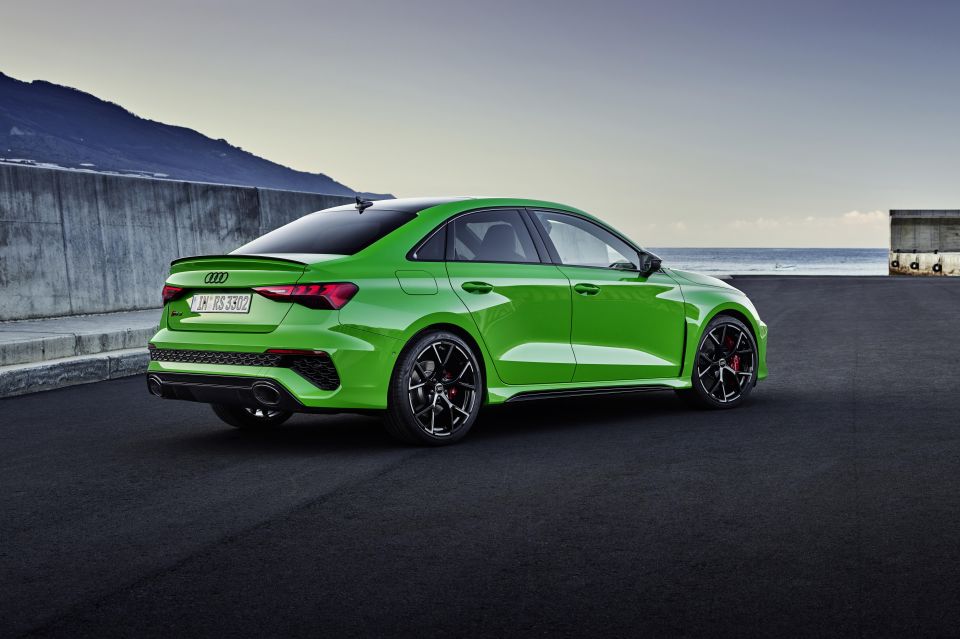
It features an electronically-controlled multiple-disc clutch on each drive shaft, with each clutch having its own control unit.
Up to 1750Nm of torque can be sent to the outer rear wheel.
Audi says the torque splitter cuts understeer, allowing earlier and faster acceleration coming out of corners, and more precise and agile handling.
Two new drive modes join the existing Comfort, Auto, Dynamic, Efficiency and Individual modes, and torque distribution varies across the entire range of modes.
In Comfort, the all-wheel drive in the RS3 is front-biased. In Auto it has closer to an even torque split between front and rear, while Dynamic sends more torque to the rear axle.

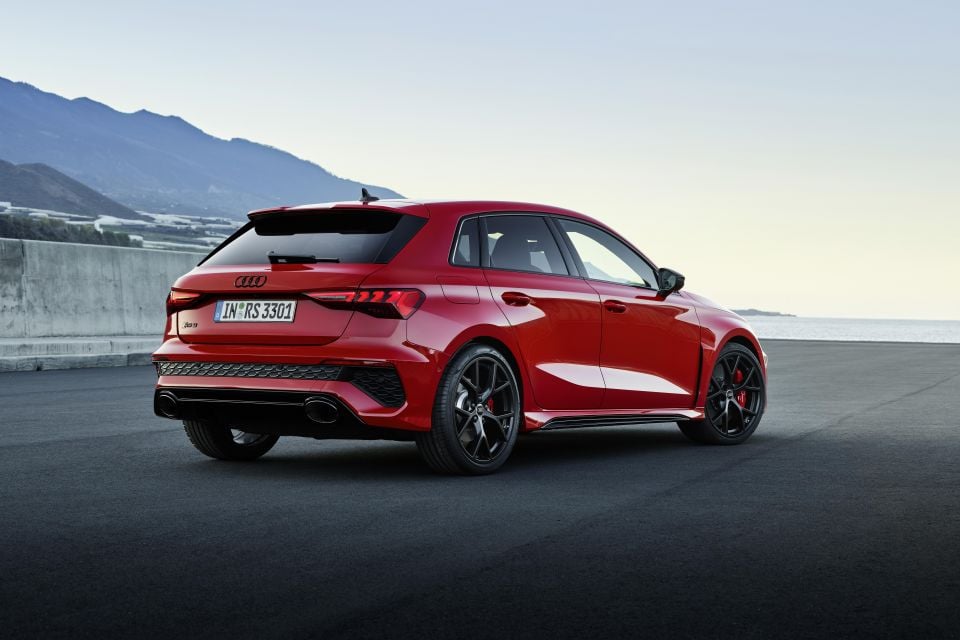
The new RS Torque Rear mode is what other brands would call Drift Mode. Up to 100 per cent of torque is sent to the outside rear wheel to get the RS3 sideways. The Mercedes-AMG A45 S has a similar system.
The new RS Performance Mode has been designed for the track, and is tuned for the optional Trofeo R semi-slick tyres.
The optional adaptive suspension features a specific comfort setting for RS Performance Mode, designed for bumpy race tracks like the Nordschleife.
The standard RS sports suspension has newly-developed shock absorbers and a valve system specific to the RS3.
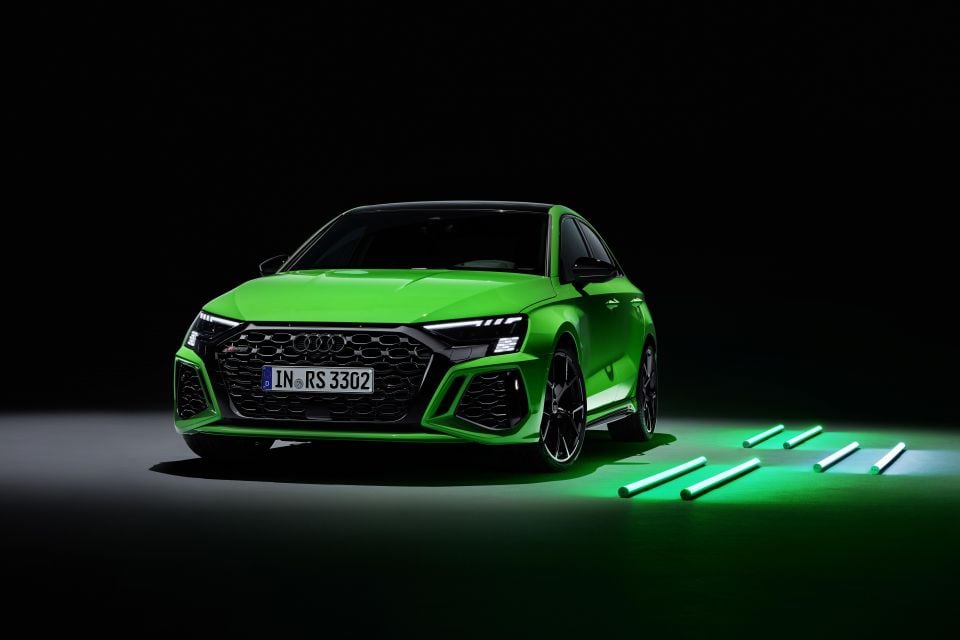

The electronic stability control can be toggled on and off, but there’s also a Sport mode that’s automatically engaged when you flick into RS Performance mode. It can also be turned off completely if you’re feeling racy.
Other changes over lesser A3 models include unique pivot bearings, subframes and stabilisers, and stiffer lower wishbones for the McPherson strut front suspension, plus bespoke progressive steering with a variable gear ratio depending on the steering angle.
Both sedan and hatch wear an aggressive new version of Audi’s Singleframe grille, with a black border and honeycomb insert. You can choose between a matte or high-gloss finish for the grille.
There’s also a racy front bumper with large air intakes, plus additional air outlets behind the flared front wheel arches to help visually give the car a wider stance.
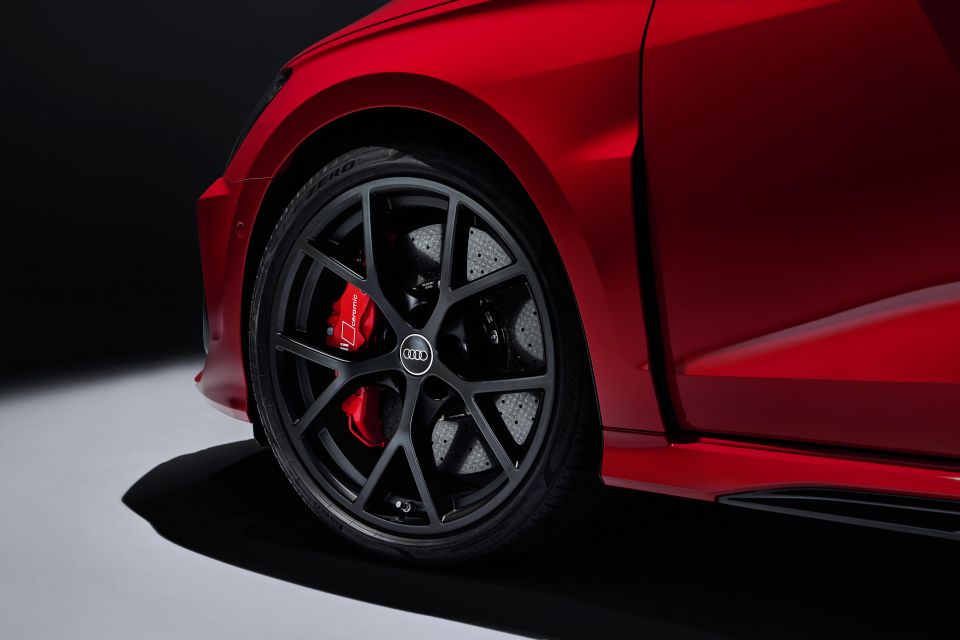

LED headlights are standard with Matrix LED headlights optional. The daytime running lights include a neat checkered flag pattern.
The front track has been widened by 33mm, while the rear track is up by 10mm on the Sportback.
Compared to the A3 and S3, there’s a more aggressive rear bumper with an integrated diffuser and dual oval exhaust outlets.
Two RS-exclusive colours are available: the featured Kyalami Green and Kemora Grey. The sedan is now available with an optional black roof.
You can also get the rocker panels, mirror caps, and rear spoiler finishes in carbon fibre-reinforced polymer.
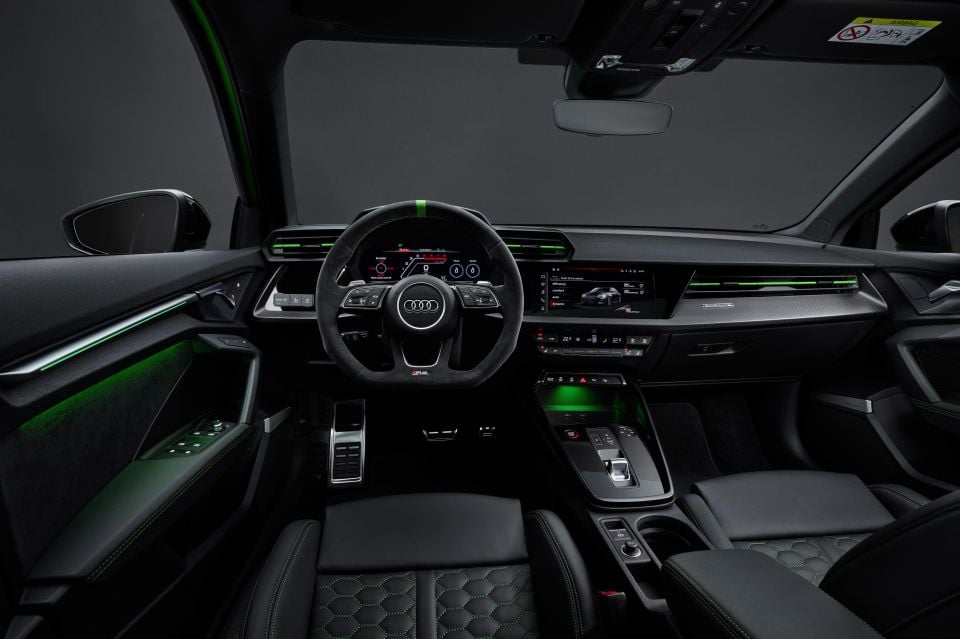
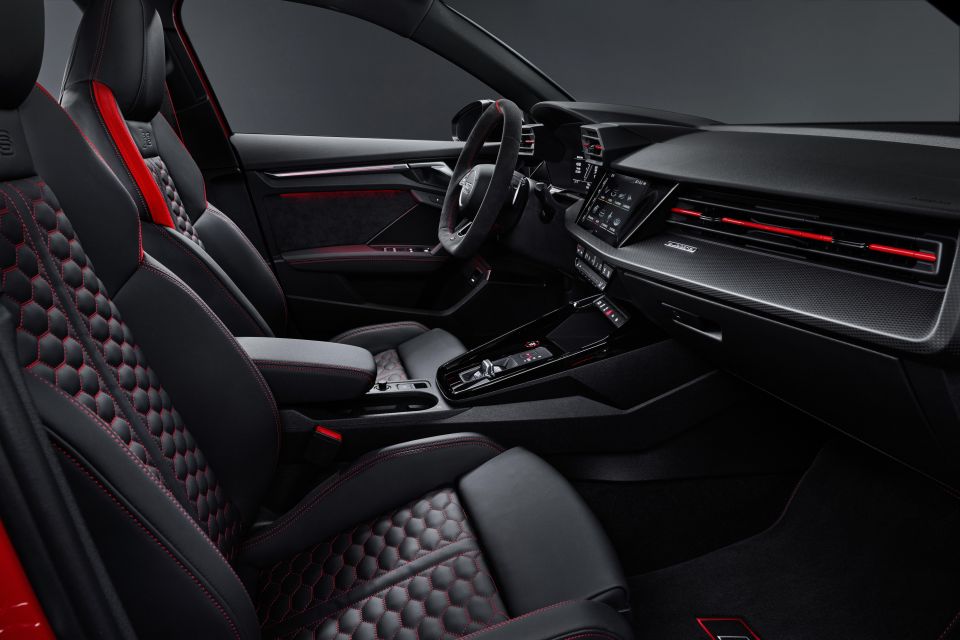
Step inside and the sporty aesthetic enhancements continue with the optional Nappa leather seats, which feature honeycomb stitching and a choice of black, red or bright green contrast stitching. Red and green RS Design packages are also available with colourful accents for the seatbelts, air vents and floor mats.
Carbon fibre trim is used on the dashboard, while the standard leather-wrapped steering wheel features a flattened bottom and a button for the RS mode, and can also be had with a 12 o’clock stripe.
Behind it sits a pair of diecast zinc paddle shifters and Audi’s 12.3-inch ‘virtual cockpit plus’ digital instrument cluster which features a distinctive new ‘RS Runway’ view mode. The RS3 will also offer the option of a head-up display.
A 10.1-inch touchscreen infotainment system juts out of the dashboard.

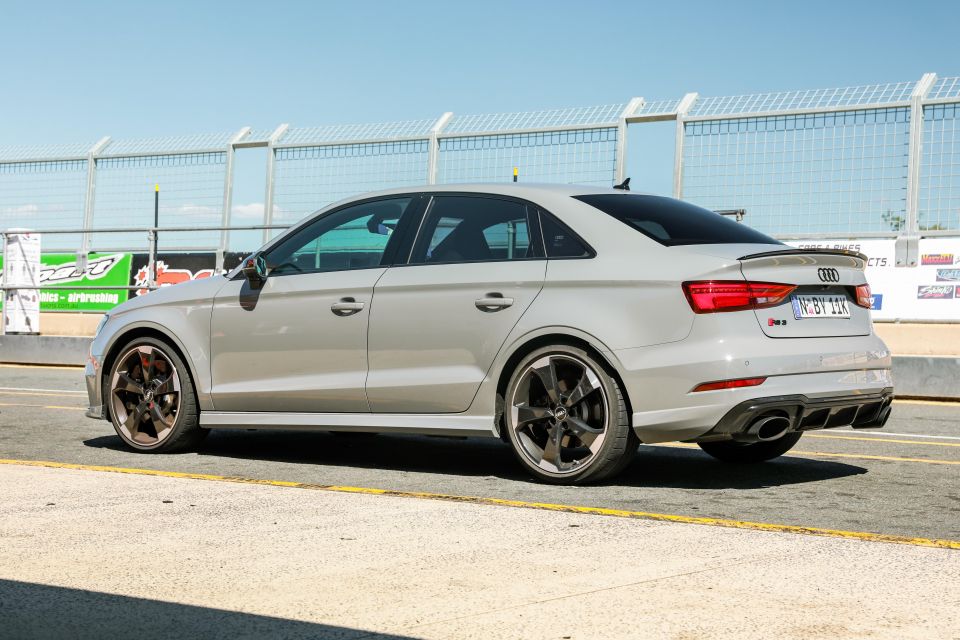
Audi won’t be making internal combustion engines for much longer, in sad news for lovers of the company’s rorty five-pots.
The company has said it’ll go all-electric by 2033, though it says ICE sales could continue beyond that point in China.
Click the images to view the full gallery.
MORE: Everything Audi RS3
Take advantage of Australia's BIGGEST new car website to find a great deal on a Audi RS3.
William Stopford is an automotive journalist based in Brisbane, Australia. William is a Business/Journalism graduate from the Queensland University of Technology who loves to travel, briefly lived in the US, and has a particular interest in the American car industry.


Max Davies
4 Days Ago
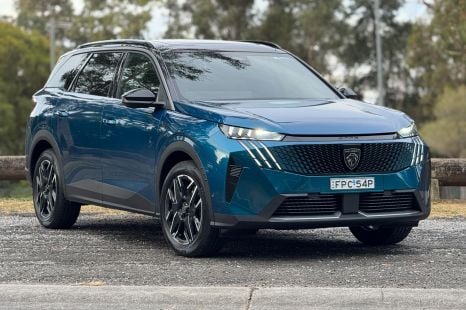

Matt Campbell
3 Days Ago
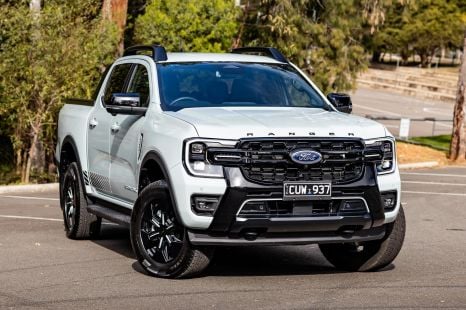

Matt Campbell
2 Days Ago
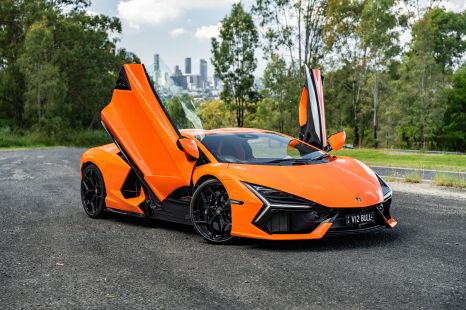

Alborz Fallah
2 Days Ago


William Stopford
1 Day Ago


James Wong
16 Hours Ago